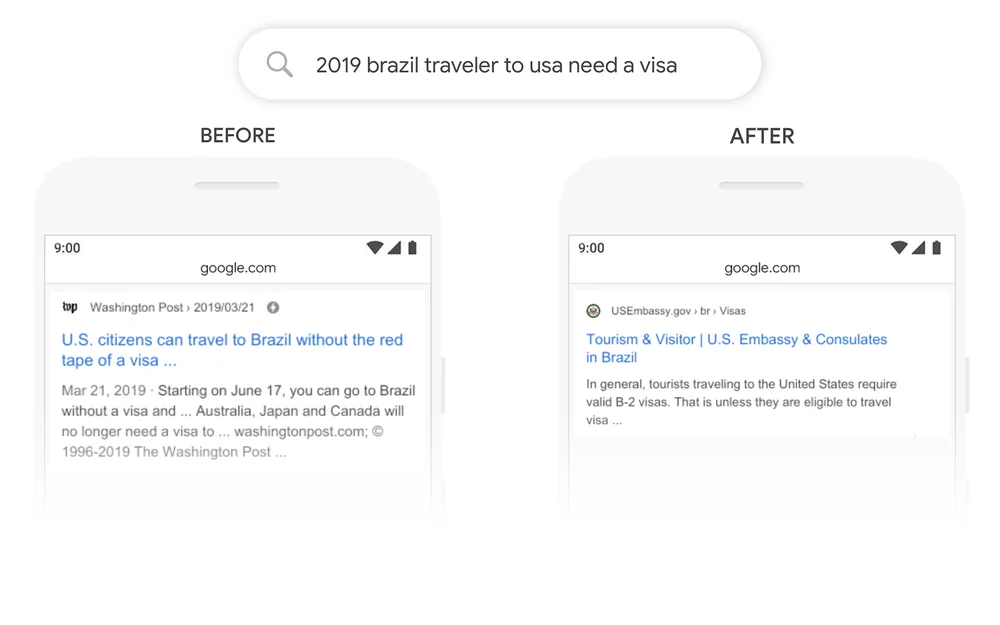The Latest Google SEO Updates – What You Need to Know to Get Ahead
Knowing the recent Google SEO updates is crucial if you’re trying to improve your website visibility on search engines.
Google releases core updates regularly to improve search results and provide users with the most relevant content. These updates can have a significant impact on a website’s SEO ranking, as Google adjusts its algorithms to better understand and evaluate web content.
So if you’ve just started dipping your toes into search engine optimization, you definitely want to stay on top of these updates to give your web content a fighting chance at getting shown in the search results pages (aka SERPs)
In this blog post, we’ll explore the most important updates that you need to be aware of to stay ahead in the SEO game.
Key Takeaways:
- Core Web Vitals: Google’s new algorithm update focuses on page experience metrics like load time, interactivity, and visual stability.
- Mobile-First Indexing: Google now predominantly uses the mobile version of your site for indexing and ranking, so it’s crucial to have a mobile-friendly website.
- Quality Content: High-quality, relevant, and authoritative content continues to be a top ranking factor, so focus on creating valuable content for your audience.
- Structured Data: Implementing structured data can improve your chances of appearing in rich results and enhancing your website’s visibility in search results.
- Local SEO: With the rise of “near me” searches, optimizing for local SEO, including Google My Business, is crucial for businesses looking to attract local customers.
How Google’s Algorithms Shape the Web
Google’s algorithms play a crucial role in determining how websites rank in search results. An understanding of these algorithms is important for anyone looking to succeed in SEO. For instance, Google’s BERT update focuses on understanding the context of search queries better, meaning websites need to create more relevant and valuable content to rank higher. Keeping up to date with these algorithms and adapting your SEO strategies accordingly can give you a competitive edge in the digital landscape.
A Brief History of Google’s SEO Updates
Over the years, Google has been continuously refining its search algorithms to provide users with the best possible search experience. This timeline showcases the major updates and their impact on website rankings. From the Panda update, which emphasized quality content, to the BERT update, which enhanced understanding of natural language, Google’s updates have shaped the SEO landscape.
Panda Update: Shifting Focus to Quality Content
The Panda update, rolled out by Google in 2011, aimed to improve the quality of search results by targeting sites with low-quality content. It focused on penalizing websites with thin, duplicate, or poorly written content. This update had a significant impact on website rankings, forcing webmasters to prioritize high-quality, relevant content. Websites that displayed expertise, authority, and trustworthiness in their content saw improvements in their rankings. It emphasized the importance of creating valuable, informative, and unique content that meets the needs of users.
Overview of Google Panda update
The Google Panda update, released in 2011, brought a significant shift in the way search rankings were determined. Its primary focus was to improve the quality of search results by penalizing websites with low-quality content. Panda targeted sites with thin, duplicate, or poorly written content, prioritizing the promotion of websites that provided valuable and informative content. This update emphasized the importance of creating high-quality, relevant content that met the needs of users. By rewarding sites with expertise, authority, and trustworthiness, Google aimed to enhance the quality of search results.
Effects of Panda update on website content quality
The Panda update had a significant impact on website content quality. Websites with low-quality, thin, or duplicate content were penalized, causing a drop in their search rankings. As a result, website owners had to prioritize creating high-quality and informative content that was valuable to users. This update forced content creators to focus on providing original, well-written, and relevant content that met the needs of their audience. The Panda update ultimately raised the bar for content quality and made it an essential factor in achieving higher search rankings.
Penguin Update: Targeting Link Schemes and Spammy Practices
The Penguin update, launched by Google in 2012, specifically targeted websites that engaged in link schemes and spammy practices. This update aimed to penalize websites that used manipulative tactics to artificially boost their search rankings. Websites that had a high number of low-quality backlinks or participated in link exchange programs were severely impacted. With the Penguin update, Google emphasized the importance of natural and organic link building practices. Website owners had to focus on creating high-quality content and acquiring genuine, authoritative backlinks to improve their search rankings.
Details of Google Penguin update
In April 2012, Google launched the Penguin update, aiming to crack down on websites that used manipulative tactics to improve their search rankings. This update targeted link schemes, such as buying or selling links, link exchange programs, and spammy practices. Websites with a high number of low-quality backlinks were heavily penalized. Penguin emphasized the importance of natural and organic link building practices and encouraged website owners to focus on creating high-quality content and acquiring genuine, authoritative backlinks to improve their search rankings. It was a significant shift towards promoting a fair and level playing field in the SEO landscape.
Impact on websites using black hat SEO techniques
Prior to the Panda and Penguin updates, SEO resembled a Wild, Wild West dominated by black hat SEO techniques such as keyword stuffing, cloaking, etc. As a newbie SEO specialist during that time, I distinctly remember one of our tasks was to load as many keywords as we can into an article for a content website.
Of course, we all know what happened afterwards.
Most websites that were using black hat SEO techniques to manipulate search rankings were severely penalized. Soon enough, we saw articles that were ranking in the top 10 significantly drop to the bottom or even get completely removed from search results. The website – and the company operating it – never recovered from the traffic loss. It ceased to exist in the Post-Panda and Penguin world.
Hummingbird Update: Emphasizing Semantic Search
The Hummingbird update, released by Google in 2013, aimed to improve search results by focusing on semantic search. This means that instead of just matching keywords, Google sought to understand the meaning behind search queries to deliver more relevant results. The update greatly affected keyword optimization, as it now prioritized user intent and contextual meaning over exact keyword matches. Website owners had to shift their SEO strategies to create high-quality content that answered users’ questions and provided valuable information. Embracing semantic search helped improve search results, making them more accurate and helpful to users.
Explanation of Google Hummingbird update
The Google Hummingbird update, released in 2013, aimed to revolutionize the way search queries were understood and processed. Unlike previous updates that focused on individual keywords, Hummingbird aimed to understand the context and intent behind entire search queries. It introduced semantic search capabilities, allowing Google to deliver more accurate and relevant search results. This update marked a significant shift in SEO strategies, as website owners had to focus on creating high-quality content that provided valuable information and answered users’ questions. The Hummingbird update laid the foundation for future advancements in search technology.
Changes in search queries and keyword optimization
With the introduction of the Hummingbird update, Google started focusing on understanding the context and intent behind search queries rather than solely relying on keywords.
This meant that website owners had to adjust their keyword optimization strategies. Instead of targeting specific keywords, they needed to focus on creating high-quality content that answered users’ questions and provided valuable information. This shift in approach required a deeper understanding of user intent and the ability to provide relevant and comprehensive answers to search queries. It also meant that long-tail keywords and natural language became increasingly important in optimizing website content. Overall, this update emphasized the importance of creating content that truly met the needs and expectations of users.
RankBrain Update: Introducing Machine Learning to Search
With the introduction of the RankBrain update, Google brought machine learning into the world of search. RankBrain is an artificial intelligence system that helps Google understand the meaning behind search queries and deliver more relevant results. This update revolutionized the search experience by considering user intent and context. It allowed Google to better understand complex queries and provide more accurate results. As a website owner, it became crucial to create content that aligned with user intent and provided relevant information. The RankBrain update emphasized the importance of delivering quality content that met the needs and expectations of users. By understanding the evolution of Google’s SEO updates, you can adapt your strategies to align with future algorithm changes and continue to improve your website’s rankings.
Overview of Google RankBrain update
The Google RankBrain update, introduced in 2015, marked a significant shift in search algorithms. RankBrain is Google’s machine learning algorithm that uses artificial intelligence to understand the meaning behind search queries. It focuses on user intent and context, allowing it to provide more relevant results. This update revolutionized the search experience by enabling Google to better understand complex queries and deliver accurate results. As a website owner, aligning your content with user intent became crucial to improve rankings and provide valuable information to users.
Influence of machine learning on search results
With the introduction of RankBrain, Google’s search algorithm became smarter and more intuitive. Machine learning played a crucial role in this update, as RankBrain uses artificial intelligence to understand the meaning behind search queries. This allowed Google to provide more accurate and relevant search results. Machine learning helps RankBrain continuously improve its understanding of user intent and adapt to changing trends in search behavior. As a result, websites that align their content with user intent have a better chance of ranking higher in search results. So, it’s important to create valuable and user-focused content that meets the evolving needs of searchers.
BERT Update: Enhancing Understanding of Natural Language
The BERT update was a major breakthrough for Google’s search algorithm. BERT stands for Bidirectional Encoder Representations from Transformers. This update focused on improving Google’s understanding of natural language by considering the context and meaning of words. BERT allowed Google to better interpret complex search queries and provide more accurate search results. With BERT, Google became better at understanding the nuances and context of words, enabling it to deliver more relevant content to users. This update emphasized the need for websites to create high-quality, informative content that matches user intent.
Details of Google BERT update
The BERT update, short for Bidirectional Encoder Representations from Transformers, marked a significant improvement in Google’s understanding of natural language. It allowed the search engine to better interpret complex search queries by considering the context and meaning of words. With BERT, Google became more adept at understanding the nuances and intent behind users’ search queries, ultimately delivering more accurate and relevant search results.

The image from Google above shows how the BERT update dramatically changed the search engine results to align closely with user search intent.
Effects on search intent and content relevance
The BERT update had a transformative impact on search intent and content relevance.
With its improved understanding of natural language, Google was able to interpret complex search queries more accurately. This meant that websites with high-quality, informative content that matched user intent had a better chance of ranking higher in search results.
The update emphasized the importance of creating content that answers users’ specific queries, leading to more relevant search results and a better user experience. By adapting your content to align with user intent, you can improve your website’s visibility and attract more organic traffic.
Trends of Google SEO Updates and Their Functions
The updates mentioned above are just some of the few that Google rolled out over the years.
But these were the ones that were responsible for changing the SEO landscape forever. Others, like Mobilegeddon and Hel, simply built on the previous releases and reinforced Google’s Experience-Expertise-Authority-Trust (E-E-A-T) objective, which is to provide a more relevant and more relevant and user-friendly search experience.
These updates focus on improving the quality of search results by refining algorithms to better understand user intent and context. Some updates prioritize websites that have high-quality content, while others penalize those with thin or spammy content. Understanding the functions of these updates is crucial for staying ahead in the SEO game.
How to Adapt to the New Changes
Updates in the Google algorithm landscape signal the need for website owners and digital marketers to continuously evolve their SEO strategies. Adapting to the new changes involves keeping content fresh, relevant, and comprehensive. This means focusing on user experience, optimizing for mobile devices, and ensuring fast loading times. Embracing these updates and making the necessary adjustments can help websites maintain or improve their search engine rankings.
The key to adapting to the new changes is to stay informed about the latest Google updates and adjust your SEO tactics accordingly. By keeping a close eye on industry news, algorithm changes, and best practices, you can ensure that your website stays visible and competitive in the ever-evolving digital landscape.
Optimizing Your Content
Content is King: Best Practices
King – In the matter of SEO, content reigns supreme. Creating high-quality, relevant content is crucial for improving your search engine rankings. Make sure your content is well-written, engaging, and provides value to your audience. Including keywords strategically and naturally throughout your content can also help boost your SEO efforts.
Evolving Your Content Strategy
King – The digital landscape is constantly changing, so it’s important to adapt and evolve your content strategy accordingly. Keep up with the latest trends and best practices in content creation and SEO to stay ahead of the competition. Consider incorporating different types of content, such as videos, infographics, and podcasts, to diversify your content strategy.
Content – As algorithms evolve, so should your content strategy. Experiment with different formats and types of content to see what resonates best with your audience. Remember that quality trumps quantity, so focus on creating valuable, engaging content that meets the needs of your target audience.
Technical SEO: Behind-the-Scenes Adjustments
Site Speed and User Experience
Your website’s site speed plays a crucial role in user experience and search engine rankings. Slow loading times can lead to high bounce rates and lower conversion rates. The best way to check this is with Google PageSpeed Insights.
To enhance your site speed, optimize images, minify CSS and JavaScript files, leverage browser caching, and consider using a content delivery network (CDN) to ensure faster load times for users across the globe.
Mobile-First Indexing and Secure Browsing
To stay ahead in Google’s rankings, it’s necessary to prioritize mobile-first indexing and secure browsing. With the increasing number of users accessing websites via mobile devices, Google now primarily uses the mobile version of a site for indexing and ranking. Ensure your website is mobile-responsive, with fast loading times and a secure HTTPS connection to provide a seamless browsing experience for mobile users.
Plus, having a mobile-friendly and secure website not only improves your SEO but also establishes trust with your audience. Google gives priority to websites that are mobile-friendly and secure, so make sure your site checks all the boxes to boost your rankings and provide a great user experience.
Off-Page SEO Strategies
The Power of Backlinks
To succeed in SEO, it’s vital to understand the significance of backlinks. Backlinks are like votes of confidence from other websites, indicating to search engines that your content is valuable and trustworthy. The more high-quality backlinks you have pointing to your site, the better your chances of ranking higher in search engine results pages.
Social Signals and Online Presence
Presence on social media platforms is crucial for boosting your off-page SEO efforts. Social signals such as likes, shares, and comments on your content can significantly impact your search engine rankings. Engaging with your audience on social media helps build brand credibility and trust, which can lead to more organic backlinks and improved online visibility.
Online interactions on social media not only increase brand awareness but also contribute to creating a strong online community around your brand. By actively engaging with your audience and providing valuable content, you can build a loyal following that will support your SEO efforts and boost your online presence.
Tools and Analytics
Utilizing Google’s SEO Tools
Nowadays, staying on top of your SEO game requires utilizing the various tools that Google provides to help improve your website’s performance. Google Search Console and Google Analytics are indispensable tools that offer valuable insights into your site’s visibility, traffic, and user behavior.
Understanding and Interpreting Analytics Data
With the vast amount of data available through tools like Google Analytics, understanding and interpreting the data is key to making informed decisions for your SEO strategy. By analyzing metrics such as organic traffic, bounce rates, and conversions, you can identify trends and areas for improvement.
Understanding how to interpret the data can help you optimize your website to attract more organic traffic and improve user engagement. By focusing on the metrics that matter most to your business goals, you can make data-driven decisions that will ultimately lead to better SEO performance.
Conclusion
Summing up, staying informed about the latest Google SEO updates is crucial to maintaining and improving your website’s search rank. By understanding Google’s algorithms and adapting your SEO strategies accordingly, you can stay ahead of the competition and drive more organic traffic to your site.
Remember to focus on providing high-quality content, optimizing for mobile and user experience, and keeping up with the latest trends in SEO to ensure that your website continues to rank well in Google search results. With the right knowledge and strategies, you can navigate the ever-evolving world of SEO and achieve long-term success for your online presence.
FAQ
Q: What are Google’s Core Updates?
A: These updates are major changes to the search algorithm that Google implements several times a year to improve search results for users. They are designed to enhance the overall search experience by rewarding high-quality content and relevant websites.
What are the latest Google SEO updates?
A: Google has recently made updates to its search algorithm to improve user experience and ensure high-quality content ranks higher. These updates focus on factors like mobile-friendliness, page speed, secure websites (HTTPS), and relevant, high-quality content.
Q: How do these SEO updates impact my website?
A: The latest Google SEO updates can affect your website’s ranking on search engine results pages (SERPs). Websites that are not optimized for mobile, have slow loading times, or lack quality content may see a drop in rankings. On the other hand, websites that meet Google’s updated criteria may experience an increase in visibility and organic traffic.
Q: What should I do to stay ahead with these Google SEO updates?
A: To stay ahead with the latest Google SEO updates, focus on optimizing your website for mobile users, improving page speed, ensuring your website is secure with HTTPS, and creating high-quality, relevant content. Regularly monitor your website’s performance, conduct SEO audits, and stay informed about any new updates from Google.
Q: How long does it take to see the effects of these SEO updates on my website?
A: The time it takes to see the effects of Google’s SEO updates on your website can vary. Some changes may be noticed within a few weeks, while others may take longer. It’s imperative to continue implementing SEO best practices and monitoring your website’s performance to gauge the impact of these updates effectively.
Q: Where can I get more information about the latest Google SEO updates?
A: For more information about the latest Google SEO updates, you can visit Google’s official webmaster guidelines, follow SEO blogs and forums, attend webinars and conferences on SEO, and consult with SEO experts. Stay proactive in learning about SEO trends and updates to ensure your website remains competitive in search engine rankings.





One Comment